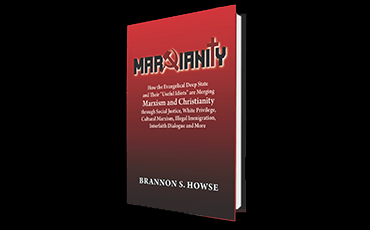India's Missing Girls and the Right to Choose
<?xml:namespace prefix = st1 ns = "urn:schemas-microsoft-com:office:smarttags" />India's Missing Girls and the Right to Choose<?xml:namespace prefix = o ns = "urn:schemas-microsoft-com:office:office" />
By Rusty Wright and Meg Korpi
Last summer, a farmer in southern India discovered a tiny human hand poking from the ground. A two-day-old baby girl had been buried alive. The reason? Much of Indian culture favors males over females, sometimes brutally so. The girl's grandfather confessed to attempting murder because his family already had too many females; keeping this one would be too costly.
This wasn't an isolated incident on the subcontinent according to award-winning filmmaker Ashok Prasad. Prasad spoke recently at Stanford University at the US premiere of his BBC documentary "India's Missing Girls." Anti-female bias affects Indians rich and poor. Males can perpetuate the family name, bring wealth, and care for elderly parents. A female's family typically must pay a huge dowry when she weds, often depleting family resources. A popular Hindi aphorism: "Having a girl is to plant a seed in someone else's garden." [1]
Female Infanticide and Feticide
Against odds, this baby survived, but social and financial pressures bring alarming rates of female infanticide and feticide (termination of a fetus). UN figures estimate 750,000 Indian girls are aborted every year.[2] Demographic studies reveal dramatically growing gender disparity since the 1980's;[3] in some regions only 80 baby girls survive for every 100 boys.[4] Many men cannot find wives.
Financial repercussions are typically cited as the reason for discarding daughters, but the decision is often an economic choice rather than necessity. Greater gender disparity occurs in wealthier states.[5] There families can better afford the sex determination tests and sex-selective abortions that, according to a report published by the UN Population Fund, are the main contributors to the decreasing proportion of female children.[6]
Adding to the offensiveness of sex-selective abortion: the fetus must be well formed (15-18 weeks) before the sex can be detected using ultrasound-the common sex-determination technology. "India's Missing Girls" includes brief, grisly footage of terminated female fetuses being lifted from a well belonging to a clinic that performed sex-selective abortions. After the discovery, outraged women's groups protested in the streets; several such clinics were closed down.
The heartening side of the documentary is Sandhya Reddy, who runs a children's home, cares for abandoned kids, and tries to persuade mothers to keep their daughters or girl fetuses. This angel of mercy brings love, care and opportunity to society's young rejects.
"India's Missing Girl's" poignantly depicts where devaluing women can lead. The Stanford screening's sponsors included feminist and women's organizations, but feminists and nonfeminists, liberals and conservatives alike will be moved. An abbreviated 29-minute version on YouTube is worth watching, even if only the first 10-minute segment.[7]
Troubling Questions
To Western sensibilities, killing babies and terminating fetuses solely because of gender is abhorrent. Yet no Hitler masterminds this mass extermination of females. It results from hundreds of thousands of personal decisions.
As the US recognizes 35 years of Roe v. Wade, feticide's increasing contribution to India's missing girls raises a disturbing dilemma: Doesn't favoring a woman's right to free reproductive choice logically require supporting her right to terminate a fetus simply because it is female?
Opposing female feticide seems to ascribe some sort of value to the female fetus. Is this value inherent because the fetus is female? If so, wouldn't equality require that we ascribe similar value to the male fetus because it is male?
Or is the fetus's value utilitarian, e.g., to ensure female influence in society or sufficient brides? Or is it merely economic-negative for Indian females, positive for males?
An enduring view of the fetus's value appears in Psalm 139. King David recognizes awe-inspiring biological intricacy fashioned by the Divine: "You made all the delicate, inner parts of my body and knit me together in my mother's womb. Thank you for making me so wonderfully complex!" [8]
Inherently valuable? Socially useful? Economically consequential? Wonderfully complex? The troubling quandary still haunts: Can opposing female feticide be reconciled with supporting reproductive choice? The question demands a logically consistent answer from every thinking person.
Rusty Wright, B.S. (Duke), M.Th. (Oxford), is a syndicated columnist, author and lecturer with Probe.org. He has spoken on six continents.
Meg Korpi, Ph.D. (Stanford), is a research scientist who studies character development and ethical decision-making through the Character Research Institute in Northern California. She has served as a consultant to the Kenan Institute for Ethics at Duke University, and previously was Senior Research Associate with ETR Associates.
# # #
[1] Raekha Prasad and Randeep Ramesh, "India's missing girls," Guardian Unlimited, February 28, 2007, http://www.guardian.co.uk/india/story/0,,2022983,00.html; accessed January 18, 2008.
[2] Ashok Prasad, "Harsh reality of India's unwanted girls," BBC News, 22 October 2007, http://news.bbc.co.uk/2/hi/programmes/this_world/7050657.stm; accessed January 18, 2008.
[3] Christophe Z. Guilmoto, "Characteristics of sex-ratio imbalance in India, and future scenarios," Report presented at the 4th Asia Pacific Conference on Reproductive Health and Rights, Hyderabad, India, October 29-31, 2007. Published by the United Nations Population Fund.
http://www.unfpa.org/gender/docs/studies/india.pdf; downloaded January 25, 2008.
[4] Prasad and Ramesh, loc. cit.
[5] Using India's 2001 census data for each state (www.censusindia.gov.in), we found strong negative correlations (‑0.5 to -0.7) between various indicators of wealth and female-to-male sex ratios for children under 6.
[6] Guilmoto, loc. cit.
[7] http://www.youtube.com/watch?v=gf32d735VgE; accessed January 18, 2008.
[8] Psalm 139:13-14 NLT.
Support Our Broadcast Network
Trending Stories
Latest
We're a 100% Listener Supported Network
3 Simple Ways to Support WVW Foundation
Make Monthly Donations
-or-
A One-Time Donation
-
Mail In Your Donation
Worldview Weekend Foundation
PO BOX 1690
Collierville, TN, 38027 USA -
Donate by Phone
901-825-0652

















